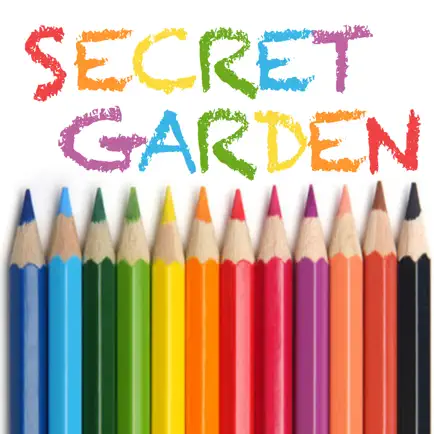
Secret Gardens Hack 1.3 + Redeem Codes
Developer: Casino Game Limited
Category: Entertainment
Price: Free
Version: 1.3
ID: com.casinogamestudio.secretgarden
Screenshots


Description
A coloring book (or colouring book) is a type of book containing line art to which a reader may add color using crayons, colored pencils, marker pens, paint or other artistic media. Coloring books are generally used by children, though coloring books for adults are also available. Traditional coloring books and coloring pages are printed on paper or card. Some coloring books have perforated edges so their pages can be removed from the books and used as individual sheets. Others may include a story line and so are intended to be left intact. Today many children's coloring books feature popular cartoon characters. They are often used as promotional materials for animated motion pictures. Coloring books may also incorporate other activities such as connect the dots, mazes and other puzzles. Some coloring books also incorporate the use of stickers.
Health and therapeutic uses
Coloring books have seen wide application in the health professions as educational tools. One nurse, trying to limit the trauma of child surgery, described in an academic publication how the use of a coloring book "might help [the child] to understand what was going to happen to him." They are also used in rehabilitation of accident victims to aid recovery of hand–eye coordination, and they are used with autistic children both for entertainment and for their soothing effect. One of the appeals of adult coloring books is that they help users relax and de-stress.
Adult coloring books
Adult coloring books, though available in print, are increasingly being offered digitally, via ebooks, digital apps, and coloring pages that can be colored online or downloaded. Contributing to the popularity of e-coloring books are their de-stressing, relaxation effects and the fact that users' work-products can be saved and shared. Possible explanation for the relaxation effect of coloring might be due to the back-and-forth movement of a pencil or crayon. Such a movement engages both spheres of the brain, reinforcing the connection between the two lobes and turning off the frontal lobe, which controls your organisation and regulation of your surroundings. That's why losing yourself in coloring can make you feel more relaxed and balanced.
Health and therapeutic uses
Coloring books have seen wide application in the health professions as educational tools. One nurse, trying to limit the trauma of child surgery, described in an academic publication how the use of a coloring book "might help [the child] to understand what was going to happen to him." They are also used in rehabilitation of accident victims to aid recovery of hand–eye coordination, and they are used with autistic children both for entertainment and for their soothing effect. One of the appeals of adult coloring books is that they help users relax and de-stress.
Adult coloring books
Adult coloring books, though available in print, are increasingly being offered digitally, via ebooks, digital apps, and coloring pages that can be colored online or downloaded. Contributing to the popularity of e-coloring books are their de-stressing, relaxation effects and the fact that users' work-products can be saved and shared. Possible explanation for the relaxation effect of coloring might be due to the back-and-forth movement of a pencil or crayon. Such a movement engages both spheres of the brain, reinforcing the connection between the two lobes and turning off the frontal lobe, which controls your organisation and regulation of your surroundings. That's why losing yourself in coloring can make you feel more relaxed and balanced.
Version history
1.3
2015-09-13
This app has been updated by Apple to display the Apple Watch app icon.
Performance Improvement
Performance Improvement
1.0
2015-09-02
Ways to hack Secret Gardens
- iGameGod (Watch Video Guide)
- iGameGuardian for iOS (Watch Video Guide) or GameGuardian for Android (Watch Video Guide)
- Lucky Patcher (Watch Video Guide)
- Cheat Engine (Watch Video Guide)
- Magisk Manager (Watch Video Guide)
- CreeHack (Watch Video Guide)
- Redeem codes (Get the Redeem codes)
Download hacked APK
Download Secret Gardens MOD APK
Request a Hack
Ratings
2.3 out of 5
3 Ratings
Reviews
Jespinoza37,
I-pencil
Does not work with I pencil

